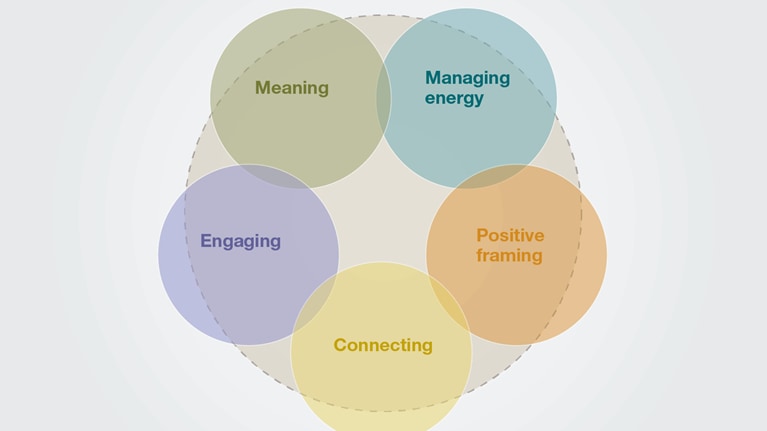The purpose of leadership isn’t to increase shareholder value or the productivity of work teams, though effective leadership does these things. Rather, the purpose of leadership is to change the world around you in the name of your values, so you can live those values more fully and use them to make life better for others. The process of leadership is to turn your values into a compelling cause for others.
After all, you can’t live your top personal values at work without the support of your people. But could they, without hesitation, pick your values from a long list? Could they describe the benefits of supporting those values? If the answer to either question is no—and for most senior managers it is—then you haven’t begun to see the performance your people are capable of.
To change this dynamic, you must reset the standard of what’s possible in the relationship between you and your people. In my experience, the best method for accomplishing this objective is to reveal “moments of truth”: the stories of how you know your values are real to you, where they came from and how you learned them, and the intimate and profound personal experiences—glorious or traumatic—that shaped your self-awareness.
To pull this feat off, you’ll have to step out from behind whatever protection your job title affords and make yourself willingly vulnerable. In doing so, you are saying: “From my experiences, this is what is most important about living.” By disclosing how your unshakable view of life priorities was formed, you are offering proof of your commitment to these values. One well-known senior executive took this advice to heart and told her staff about a savage yet triumphant experience that she had never previously revealed to most of her friends—and certainly never to her employees—in a way that underlined just how strongly she felt about her connection to them. This is her story.
One executive’s moment of truth
“I grew up in a very small town in the Deep South. There were two schools in our town: the white school and the black school. Since I’m black, I went to the black school, which didn’t have as many teachers or books or fun things as the white school. But I was a smart little girl, and my mother made up for the lack of resources when I got home every day. Before I could go out and play, we would sit at the dining-room table, and she would take down a big, old encyclopedia from the shelf and teach me about the world.
I looked up to see four huge men on horseback with masks on, carrying baseball bats. They were riding right at us.
“One day I brought home a report card that was so good my mother said, ‘I think we can get you into the white school. Do you want to go?’ ‘Yes!’ I said, because I was a smart girl and I wanted to learn. I didn’t know that the school district was under a lot of federal pressure to integrate. Our family talked about it and decided that if the school would accept me, I would go—as long as my two older brothers transferred with me. My brothers didn’t want to go, but they loved their little sister and so they agreed. We would be the first black children at the school.
“I had only two dresses and I got to wear my church dress on my first day in school! I was assigned a seat in the back next to a little redheaded white girl and I immediately became best friends with her, the way little girls do. When the bell rang for recess, I went out to the schoolyard to play with my new friend and her other friends. All of the girls were on the schoolyard, and all of the boys were playing on the football field. A large wire fence separated the two areas. My new friend told me that boys and girls used to play together, but since my two brothers were here now the school had put up the fence to separate the boys from the girls.
“We were playing and screaming and laughing when we heard screaming of a different kind from the edge of the schoolyard. I looked up to see four huge men on horseback with masks on, carrying baseball bats. They were riding right at us. Everyone ran toward the school building. The teachers got there first and locked the doors behind them. As I was running, I could hear my brothers yelling my name. They were clawing at the fence, trying to save me, but the fence was too high.
“I was a fast little girl—weighed almost nothing, and most of it was legs. I was already almost to the bleacher seats stacked against the wall of the school building. I knew if I could scramble under those bleachers, the horses couldn’t get to me. I was just about to roll under the seats when I heard a scream I thought I recognized. I turned around and saw that one of the riders had grabbed my new friend by the hair—she had been playing with me—and was holding her a couple of feet off the ground. She was screaming and sobbing.
“I didn’t even stop to think. I just turned around and ran at that man on the horse. He was holding my friend on the left side of the horse. This horse was so big and it was sweating and its eyes were wild and glaring at me. It was trying to move around to kick me. I ran to the man’s right side and sunk my teeth into his leg, biting him as hard as I could.
“The good news is that he dropped my friend, but he picked me up instead. He dragged me by my arm across the concrete and two blocks outside the schoolyard. My Sunday dress got torn off. I was bruised all over, the skin on my back and side and left leg was in ribbons, and they told me that I lost a lot of blood. He left me lying in the street, but I don’t really remember that.
“My mother came to the hospital every day for five weeks. Every day, she brought my school lessons and that old encyclopedia and she would help me study the best I could. When I got out, she asked me what I wanted to do. ‘I want to go back to the white school and graduate,’ I said. And I did.
“I am a grown woman now. I am a successful executive. I am a wife and I am a mother. In this life, I have had an opportunity to learn what is most important to me, and what is most important to me is loyalty. The little white girl from that school is still my best friend today. I’m not willing to live without loyalty in my life and I’m not willing to have people I care about live without it.
“We have a lot of pressures on our team these days. You’re working very hard, and we often don’t get the cooperation we need from other departments. Things aren’t always easy for us, and I know that. I know this will change, because we will be the ones to change it. I just can’t tell you when it will change.
“But I can tell you this: if you are working for me and you ever get into trouble trying to do the right thing—I’m coming back for you.”
Postscript
As I’ve observed time and again in working with companies around the world, taking the risk to share a “moment of truth” can help make leaders better and produce real business benefits. But what if your story isn’t as jaw-dropping as this one?
The answer is that your story doesn’t have to be dramatic, only real. True epiphanies often come from a series of small moments—visible, for instance, only after reflecting on the decisions that first caused you to need your values or become aware of them. Indeed, simply looking at your values consciously often helps connect them to the specific moments—big or small—that made a difference to you then and can again now.


